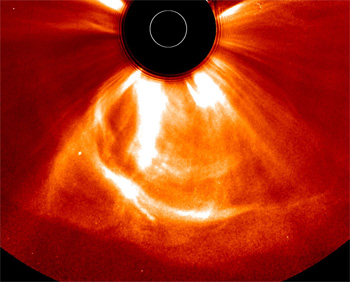Plasma Tornades on the Sun
The Sun, our closest star, is a dynamic and turbulent celestial body exhibiting a variety of fascinating and powerful phenomena. Among these are plasma tornadoes, also known as solar tornadoes, which are massive, swirling structures of hot, magnetized plasma that occur in the Sun’s atmosphere. These plasma tornadoes, while visually reminiscent of tornadoes on Earth, operate on a vastly different scale and are driven by the Sun’s magnetic forces. This article explores the nature, formation, and significance of plasma tornadoes on the Sun.
What Are Plasma Tornadoes?

Plasma tornadoes on the Sun are towering structures that can span thousands of kilometers in height. They are formed by the intricate interplay of magnetic fields and solar plasma—an electrically charged gas consisting of ions and electrons. These solar vortices are visible in the Sun’s corona, the outermost part of its atmosphere, where they appear as spiraling columns of plasma.
Formation of Plasma Tornadoes
The formation of plasma tornadoes is closely linked to the Sun’s magnetic activity. Here’s a step-by-step look at how these phenomena form:
Magnetic Field Lines and Plasma Movement
- Magnetic Field Interaction: The Sun’s magnetic field is highly complex and dynamic, with magnetic field lines constantly twisting, breaking, and reconnecting due to the Sun’s differential rotation and convective motions beneath the surface.
- Plasma Convection: The solar plasma is in constant motion due to the convection currents within the Sun. Hot plasma rises to the surface, cools, and then sinks back down, creating convective cells.
- Twisting Magnetic Fields: When magnetic field lines become twisted and tangled due to these convective motions, they can form helical structures. Plasma trapped within these twisted magnetic fields begins to spiral, creating the appearance of a tornado.
- Magnetic Reconnection: Magnetic reconnection, a process where magnetic field lines break and reconnect, can release enormous amounts of energy, contributing to the acceleration and heating of the plasma within the tornado.
Observing Plasma Tornadoes
Solar telescopes and spacecraft equipped with specialized instruments, such as the Solar Dynamics Observatory (SDO) and the Solar and Heliospheric Observatory (SOHO), have provided stunning images and data on plasma tornadoes. These observations are typically made in the extreme ultraviolet (EUV) and X-ray wavelengths, which are ideal for viewing the hot plasma in the Sun’s corona.
Characteristics
- Size and Duration: Plasma tornadoes can reach heights of up to 200,000 kilometers and can last for several hours to days. Their width can be several thousand kilometers.
- Rotation Speed: The rotational speed of plasma within these tornadoes can reach up to 300,000 kilometers per hour (approximately 186,000 miles per hour).
- Temperature: The temperature of the plasma in these tornadoes can exceed several million degrees Celsius, significantly hotter than the Sun’s surface.
Significance of Plasma Tornadoes
Plasma tornadoes are not only visually spectacular but also scientifically significant. They provide insights into the Sun’s magnetic field dynamics and contribute to our understanding of space weather phenomena, which can impact Earth.
Heating the Corona
One of the longstanding mysteries in solar physics is why the Sun’s corona is significantly hotter than its surface. Plasma tornadoes are believed to play a role in this coronal heating problem. The magnetic reconnection and the subsequent release of energy within these tornadoes may help transfer heat to the corona.
Solar Wind and Space Weather
Plasma tornadoes can also influence the solar wind, the stream of charged particles that flows outward from the Sun. Changes in the solar wind can affect space weather, impacting satellite operations, communication systems, and even power grids on Earth. Understanding plasma tornadoes helps scientists predict and mitigate the effects of space weather.
Case Studies and Observations
Several notable observations have provided detailed insights into plasma tornadoes:
The 2012 Solar Tornado

In February 2012, the SDO captured a remarkable plasma tornado on the Sun. This tornado, spanning about 200,000 kilometers in height, rotated at speeds up to 300,000 kilometers per hour. The observations from this event allowed scientists to study the dynamics of plasma flows and magnetic field interactions in unprecedented detail.
Recent Observations
Recent advancements in solar observation technologies continue to unveil new details about plasma tornadoes. High-resolution images and 3D models have provided better understanding of the magnetic structures and plasma dynamics involved in these phenomena.
